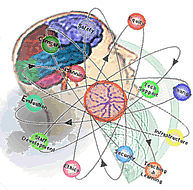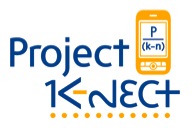I'm always on the lookout for applications that can support intervention and progress monitoring. SymTrend is a company that provides coaching and monitoring software for a variety of social and emotional difficulties and disorders. SymTrend looks like it has potential for intervention and progress monitoring in schools for RTI (Response to Intervention), Positive Behavior Intervention and Supports, and IEP's.
The beauty of SymTrend, in my opinion, is that it helps people develop self-monitoring skills through providing a means of analyzing data that is gathered frequently. From what I understand, through interaction with the software, the student/client establishes a better understanding of themselves, and also and understanding of feelings, triggers, reactions, and coping strategies. A rich amount of data is collected that can be helpful to treatment providers, or special educators.
The following video from Minna Levine, Ph.D., president of SymTrend, explains how it can be used for young people who have Asperger syndrome:
Information I "reblogged" Dan Brickland, a SymTrend Advocate:
"SymTrend is an electronic diary system that is designed to optimize symptom and behavior reporting, progress tracking, and session to session progress. It combines tracking tools to see how things are going, with analytic tools for seeing what might subvert or retard treatment efficacy. It also contains guidance tools that can help make things go better. SymTrend is most useful when one or more of the following occur in a health or educational challenge:
- The course of change is slow and the indices of progress may be mixed or ambiguous.
- There is no single magic bullet solution or cure.
- There are, instead, multiple solution strategies that can be tried.
- The best combination of solution strategies depends on individual circumstances.
- The delivery of multiple services occurs at different sites and requires some coordination in time or over developmental stages.
- The road to success has hidden mine fields that impede progress, must be located, and that must be circumvented.
- The indices of progress - symptom reduction and skill building - are best measured at home or in the community not in an office.
- Progress indices change through out the day or from day to day in response to events.
- Verbal report is compromised by observational and memory failure.
- The verbal report takes longer than the service provider can give to listen.
- The person with the problem would benefit from on the spot "when to" reminders to improve progress.
- The person with the problem would benefit from how to reminders which enhance presence of mind and executive functioning reminders to improve progress."
If you are using SymTrend in the schools, clinical practice, or for research, please leave a comment!











